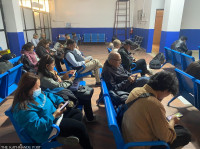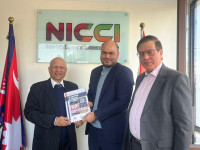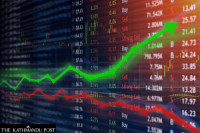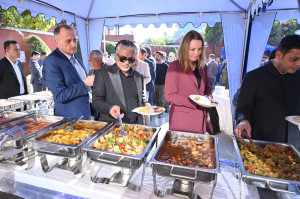Culture & Lifestyle
How rising fuel prices is changing the way people commute
With fuel prices hitting an all-time high, consumers are resorting towards alternative ways of commuting making significant lifestyle changes, but others who do not have such privilege are anxious about the future.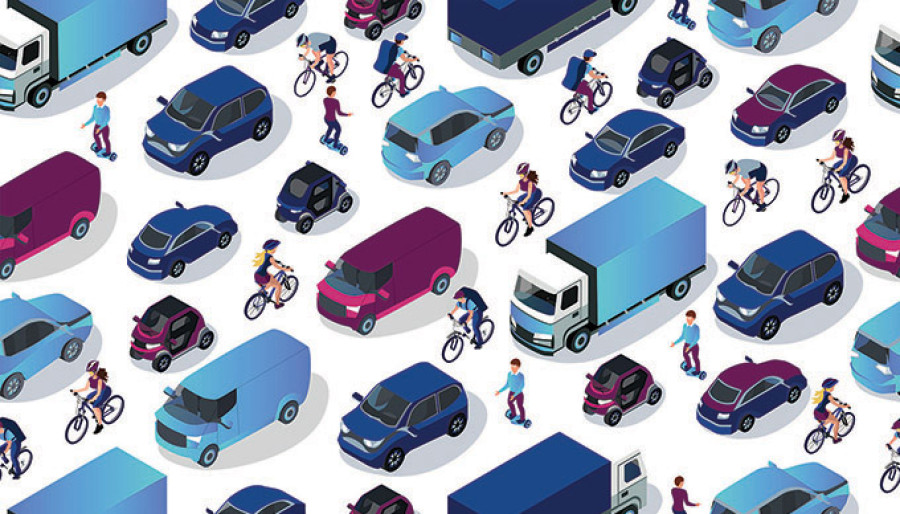
Pinki Sris Rana
For the past 12 years, Sarina Sthapit has been riding her petrol-run scooter to travel everywhere—from daily commutes to her office in Jhamsikhel to visits to her friends and relatives near and far.
But recently, 28-year-old Sthapit sold her scooter and is now thinking of buying an electric one.
“After thinking things through, I decided to sell my scooter. Although the electric scooter I am thinking of buying is a lot pricier, at least I won’t be buying petrol at sky-high prices,” says Sthapit.
With fuel prices hitting an all-time high, many like Sthapit are rethinking how they commute in their daily lives. Some are switching to electric vehicles (EV); some have resorted to cycling, but many who do not have the privilege of owning their own vehicle are already worried about a steep hike in public transportation fares.
Energy watchdogs claim that the cheaper cost of EV ownership has been encouraging many to make the switch from internal combustion engine (ICE) vehicles to EVs, and with rising fuel prices, the trend is also catching up in Nepal.
In May 2020, the government increased excise duties on EVs from 10 percent to 40-60 percent and slapped a 60 percent customs duty, making the vehicles much pricier. After a huge public outcry, in 2021, the government reversed the taxes and duties it had imposed on EVs. With EVs not as expensive as they were in 2020 and massive hikes in fuel prices over the last few months, EVs are now more popular than ever.
“After the hike in fuel prices, the number of people visiting our showroom has doubled. Although the sales might not have increased in the same ratio, people are starting to look for alternatives to ICE vehicles,” says Sam Sapkota, assistant general manager of Terra Motors, a Japanese EV brand.
According to Sapkota, electric four-wheelers are more popular than electric two-wheelers. “Nepali auto market has EVs from globally renowned four-wheeler brands like Hyundai, Toyota, and KIA, among others. But when it comes to electric two-wheelers, the majority of the options available are Chinese brands which aren’t quite as renowned.”
Pranish Pathak, an aircraft engineer, also bought his first electric car almost three years ago when Nepal started getting electric cars manufactured by renowned brands.
“I have been using an MG electric car for two and a half years, and I can say that the cost of running an EV is much cheaper compared to a petrol or a diesel-powered car. The running cost of my EV only comes to around Rs 1.5 per km,” says Pathak.
Pathak adds that he has always been a promoter of EVs.
“From a financial point of view, I always knew that EVs are much more economical to own than petrol or diesel-powered vehicles. When I decided to buy my EV almost three years ago, many people questioned my decision,” says Pathak. “But in the last few months, I have seen many people complain about rising fuel prices and how expensive it has now become to drive a car while I have been satisfied with my EV all these years.”
When prices of petrol hit Rs 150 earlier this month, Sunil Maharjan, a graphic designer, bought a bicycle for Rs 30,000.
“For the past seven to eight years, I have relied on my motorbike to travel. But since petrol prices started increasing exorbitantly, it became too expensive to ride my motorbike daily,” says Maharjan. “Ever since I purchased a bicycle, I have been using it every other day. This way, I get to save some money as well as get some cardio done.”
Like Maharjan, many have also started seeking a secondary mode of transportation to cut down expenses.
Harihar Dhungana, a native of Kusunti, Lalitpur, started driving a petrol-run car twenty years ago. Back then, says Dhungana, petrol was Rs 68 per litre.
“I understand the price hike is a global phenomenon but even when the prices are somewhat decreasing in other countries like in the US, the price in Nepal only seems to get higher. I am frustrated to the point that I want to buy a Chinese electric scooter,” says 51-year-old Dhungana.
Although Dhungana isn’t ready to make the shift to electric scooter anytime soon, he says he has already made significant changes to how he commutes daily. These days in his bid to save fuel, he says, he doesn’t use his car’s AC.
“Every time I feel like turning on the AC, I remind myself of the cost of fuel,” remarks Dhungana sarcastically. “I have also started using my car less and use ride-sharing apps whenever possible.”
But many people who use ride-sharing apps as their primary mode of transportation say that they are worried about an impending fare hike.
“As of now, ride-sharing platforms have not increased their fares. But I have heard many riders working for these platforms complain about fares remaining the same despite the rising fuel prices. This makes me think that these platforms will soon hike their fares,” says 21-year-old Rukman Karki, who frequently uses ride-sharing platforms. “If the fares are increased, I will have to resort to using public vehicles.”
Operators of public vehicles have already been pressing the government to hike fares by 11 percent, and if the fares get hiked, this will directly affect those using public vehicles on a regular basis.
Seventeen-year-old Sujata Humagain, a high school student, is already concerned about the possible increase in bus fares. For six days a week, Humagain takes a bus from her house in Taudaha to her college in Chapagaun.
“My parents give me Rs 100 for my daily expenses. I spend Rs 50 every day just to get from home to college and back,” says Humagain. “If there’s an increase in bus fares, it will make things very difficult for students like me who receive a limited amount of pocket money.”




 18.12°C Kathmandu
18.12°C Kathmandu



